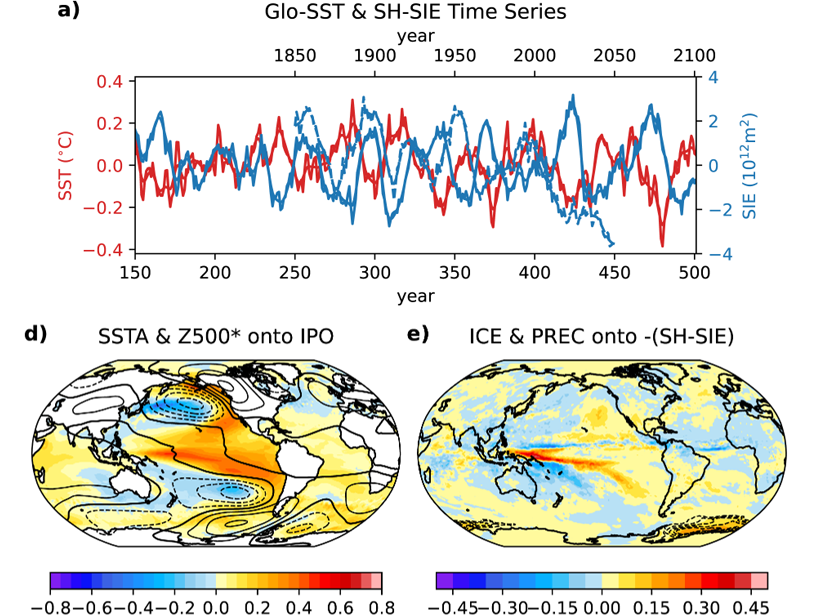Source: Journal of Advances in Modeling Earth Systems (JAMES)
Chang et al. [2020] are the first to simulate the coupled Earth system at fine enough resolution to explicitly resolve ocean mesoscale eddies and permit tropical cyclones while at the same time running long enough to convincingly capture equilibrated pre-industrial conditions, historical evolution of anthropogenic climate change, and near-term future predictions. This is a big deal because recent studies and process-level understanding suggest that coarser resolution is a major source of model deficiencies, yet previous high-resolution studies have been too short to provide an adequately equilibrated pre-industrial state or to capture the full history of anthropogenic climate change.
With 750 simulated years of data, this study is also able to explore for the first time decadal-scale variability in a model which captures more scales of motion. This novel research identifies a connection between openings in Antarctic sea ice (called polynyas) and the Interdecadal Pacific Oscillation, which affects weather throughout the Pacific Basin. Because the model output presented in this study will be publicly available, this study is sure to form the foundation for a lot of great research.
Citation: Chang, P., Zhang, S., Danabasoglu, G., Yeager, S. G., Fu, H., Wang, H., et al. [2020]. An unprecedented set of high‐resolution earth system simulations for understanding multiscale interactions in climate variability and change. Journal of Advances in Modeling Earth Systems, 12, e2020MS002298. https://doi.org/10.1029/2020MS002298
—Peter Caldwell, Associate Editor, Journal of Advances in Modeling Earth Systems
Text © 2021. The authors. CC BY-NC-ND 3.0
Except where otherwise noted, images are subject to copyright. Any reuse without express permission from the copyright owner is prohibited.

